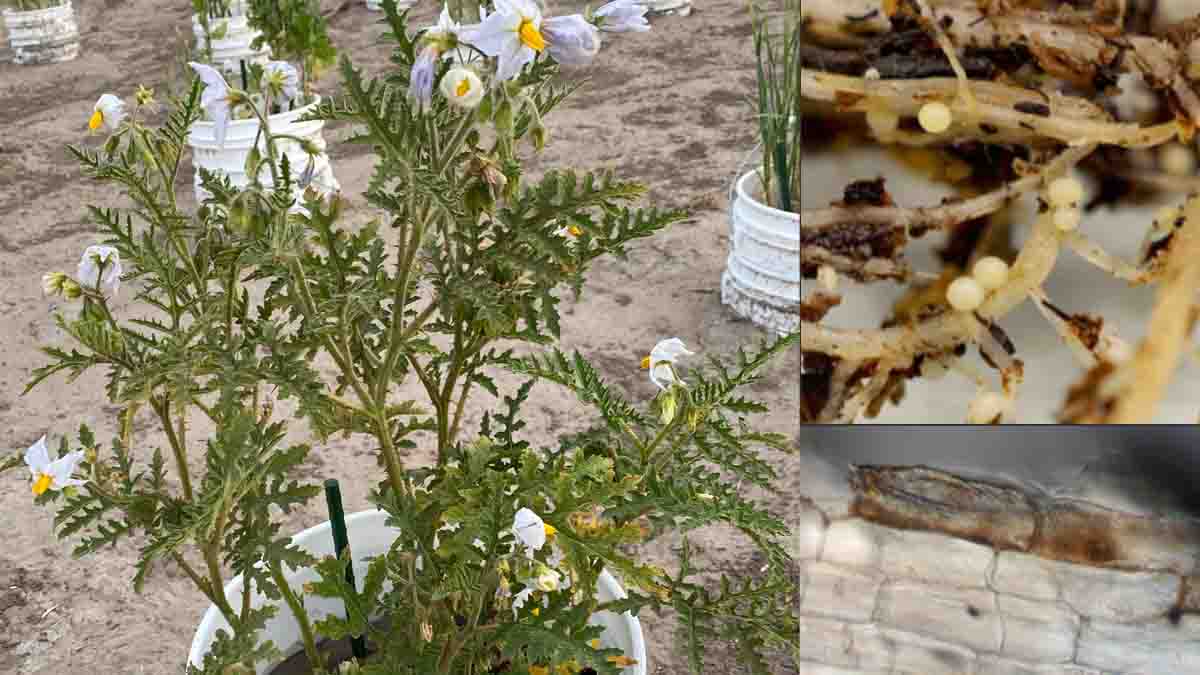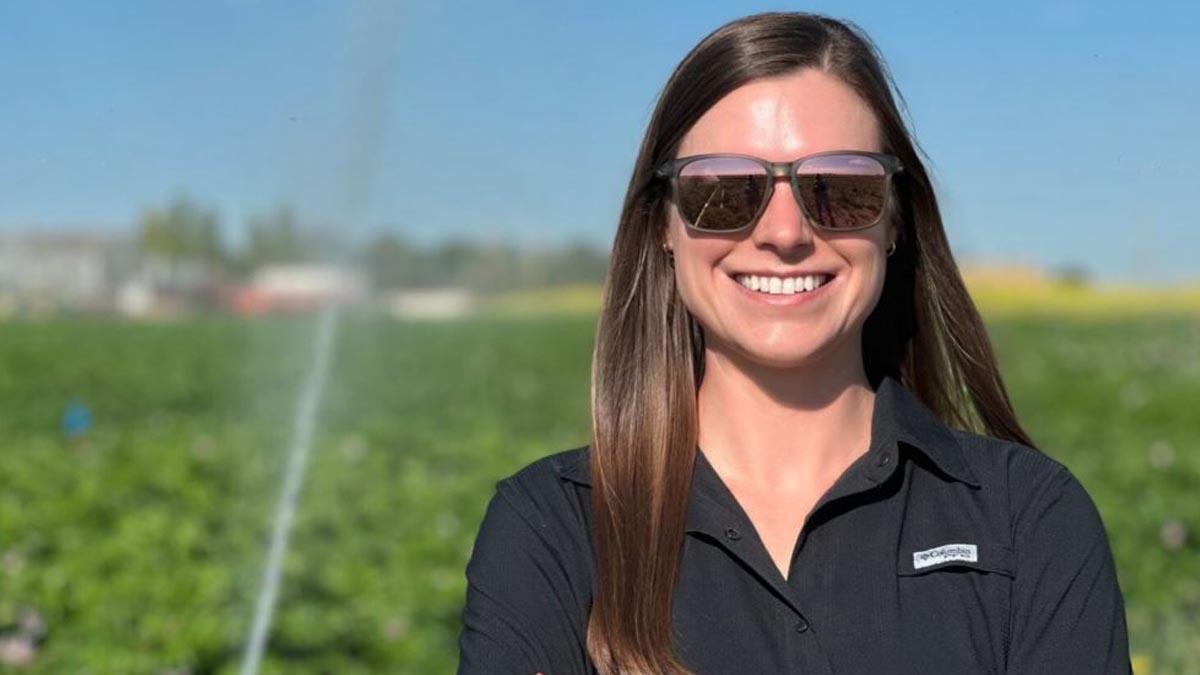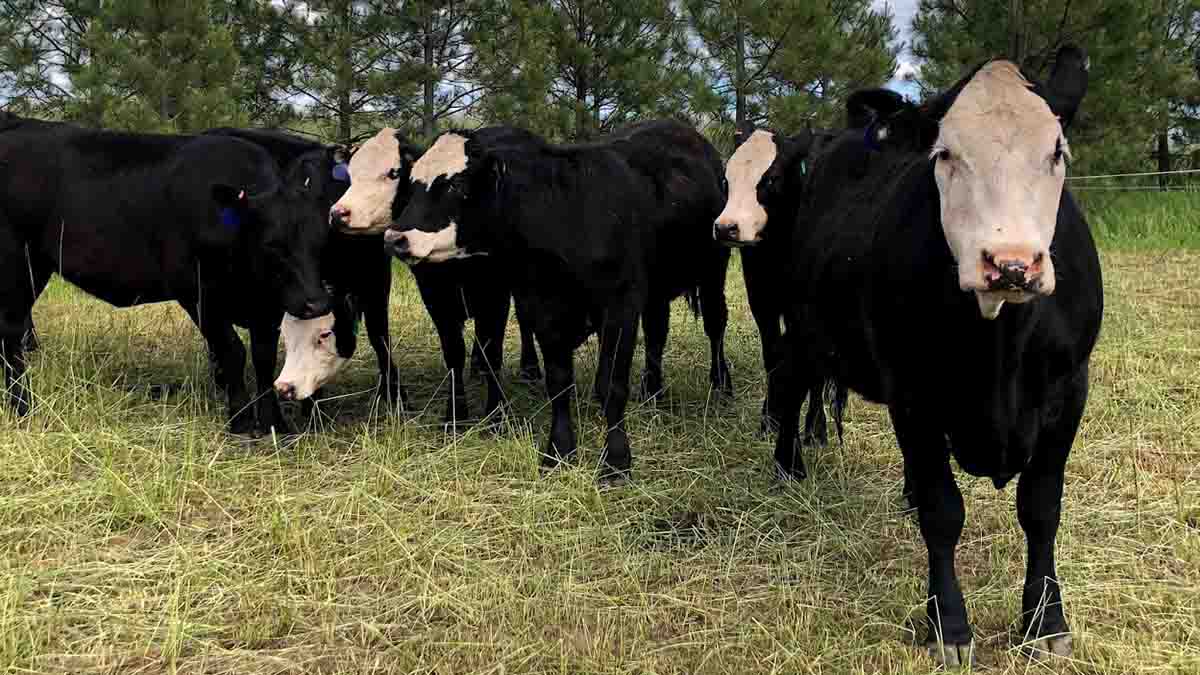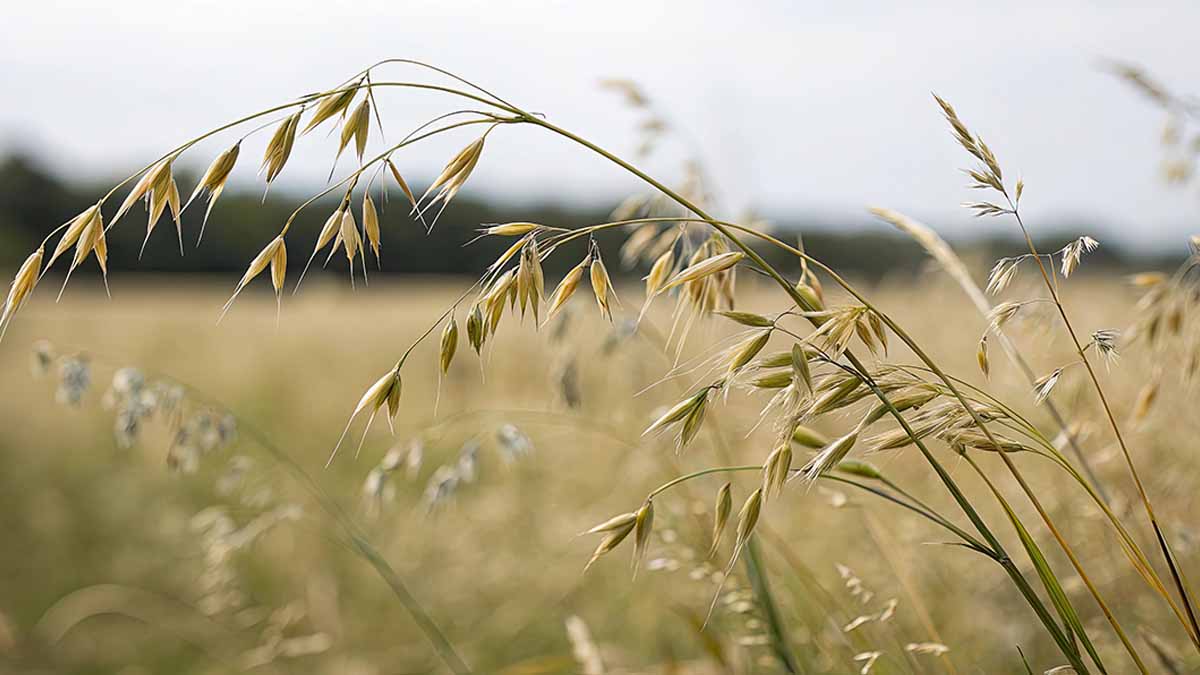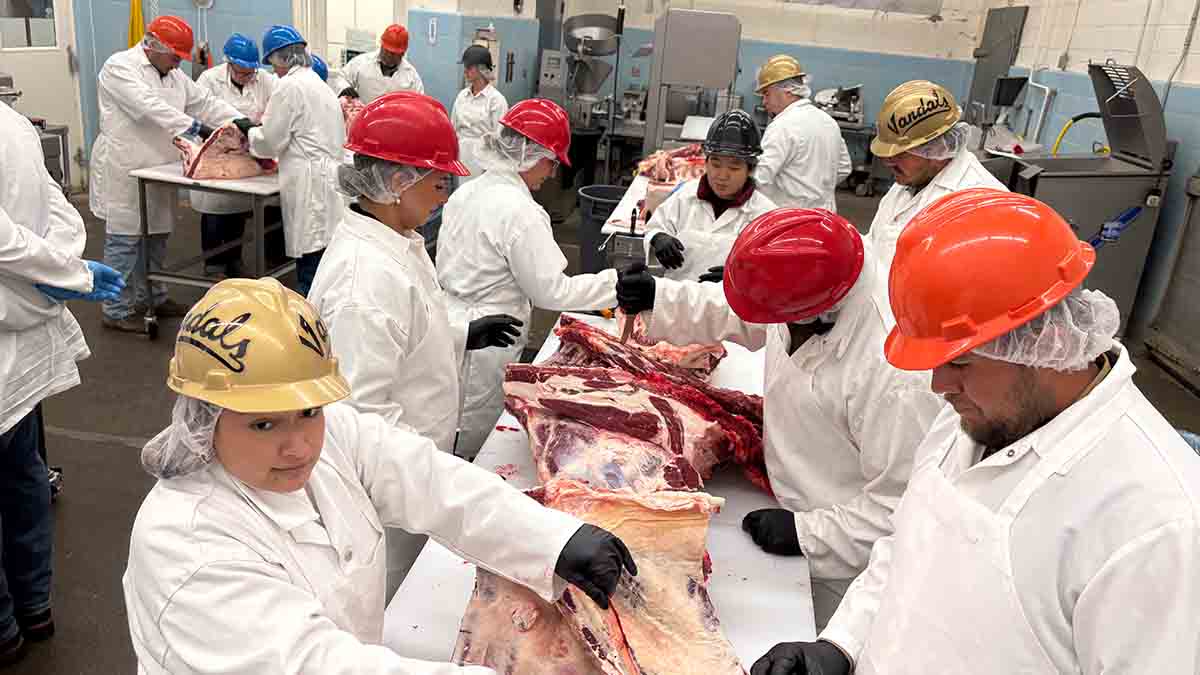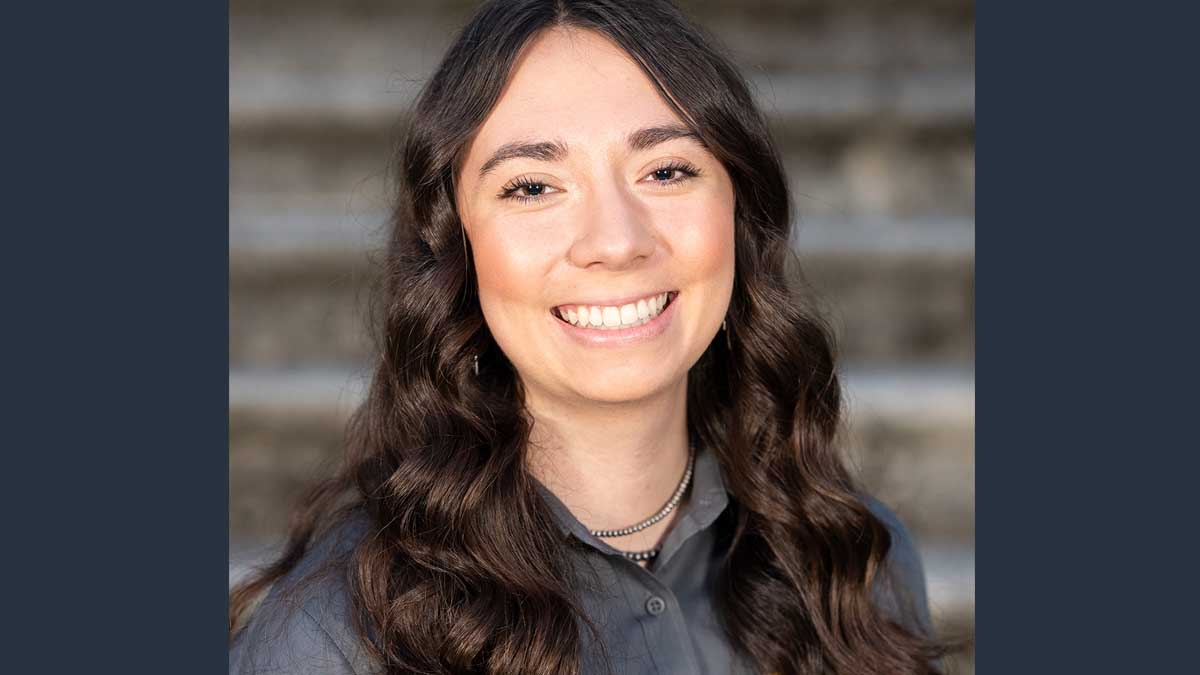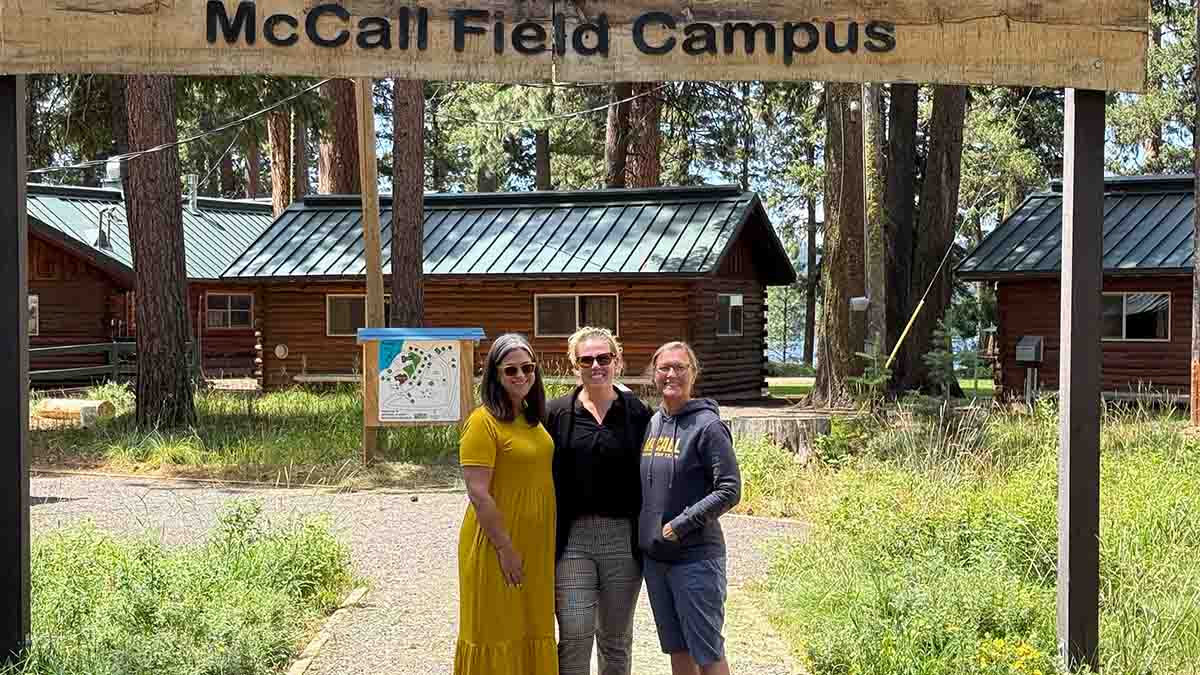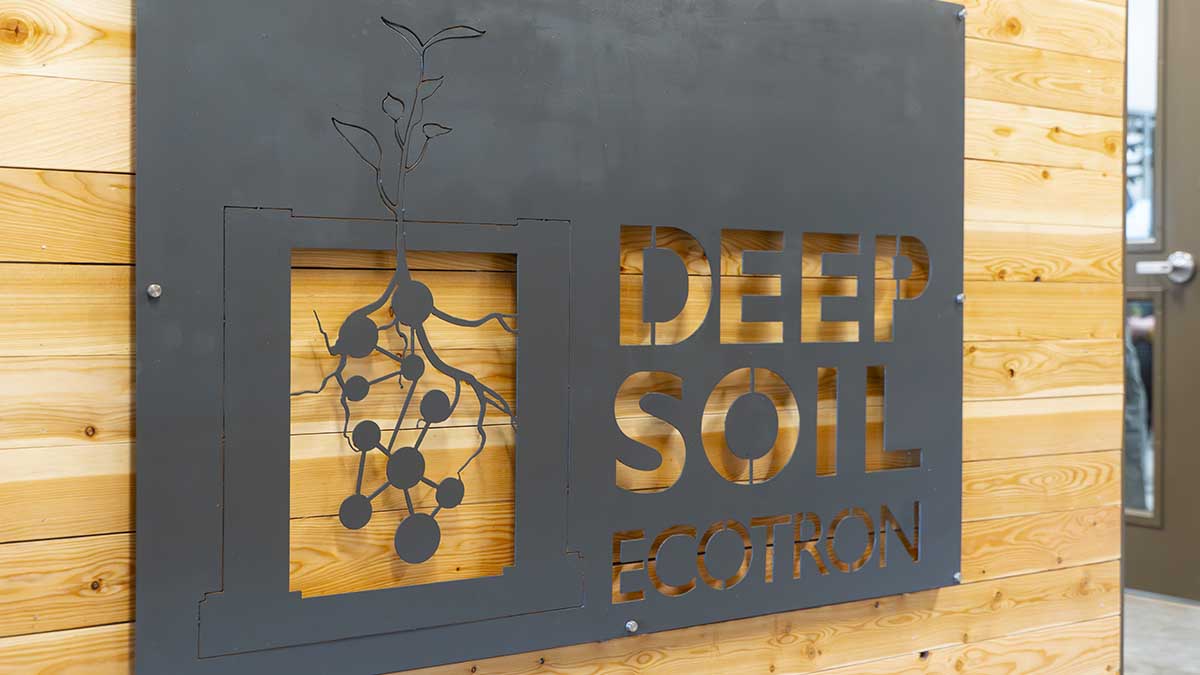Catching Up with CALS — July 30, 2025
Dean's Message — Family Ties
I’ve had many conversations recently about our college’s successes in advancing Idaho agriculture and family and consumer sciences through research, Extension and education. However, an email from Lloyd Knight, deputy director of the Idaho State Department of Agriculture, got me thinking about the human aspect of our contributions, extending well beyond conferring degrees and publishing research. As Knight attests, our belief in a CALS family isn’t empty rhetoric. Rather, I’m already finding ours is an extended family, spanning throughout Idaho and beyond, and the bonds hold strong over time. In his email, Knight (’96, animal science) wrote me: “CALS is so important to the state and industry, but also to so many of us on a personal level. We learned there. We grew there. We met spouses, lifelong colleagues and friends there. I am convinced that CALS is the heart and soul of the university and a wholly unique entity within the larger university structure. No doubt, you will face challenges, both internal and external. Your success as a leader is our success as an industry, a state and as the greater CALS family.”
University of Idaho has long been ranked as the No. 1 best value public university in the West by U.S. News and World Report. Furthermore, CALS is listed as America’s No. 13 best college for agricultural sciences by Niche. In addition to receiving a great education at an affordable price, our students discover their passions and set their life course through their experiences and interactions within CALS. And when they leave campus and seek employment, they build networks with alumni who occupy key leadership positions and view their fellow Vandals as family.
I met one such member of our Vandal family, Lucas Reid, vice president of development with Sedron Technologies based in Sedro-Woolley, Washington, at a recent dairy industry meeting. Reid, who comes from a long line of Idaho farmers, earned a bachelor’s in agricultural engineering in 2011 and a master’s in mechanical engineering in 2012 and has been doing cutting-edge work in dairy waste management by converting dairy effluent into sustainable fertilizer. Reid, who started working in the aerospace industry before returning to his agricultural roots, told me he’d like to reconnect with his alma mater and share his story and experiences with our students. We will make sure that happens. Our university is now mulling updates to its strategic plan, and our alumni represent an invaluable resource to help us forge a path forward. More than 60% of CALS students are engaging in experiential learning, helping them apply classroom theories to real-world situations. With the aid of our alumni, I’m confident we can boost that number to 100%, and CALS can lead the university in this area of the strategic plan. We have a large, talented and accomplished Vandal family, and they’re eager to help if we only ask. Thank you all for the warm welcome to the Vandal family. Please reach out if you see areas where we can engage our alumni with our students to ensure continued success.

Leslie Edgar
J.R. Simplot Endowed Dean
College of Agricultural and Life Sciences
Our Stories
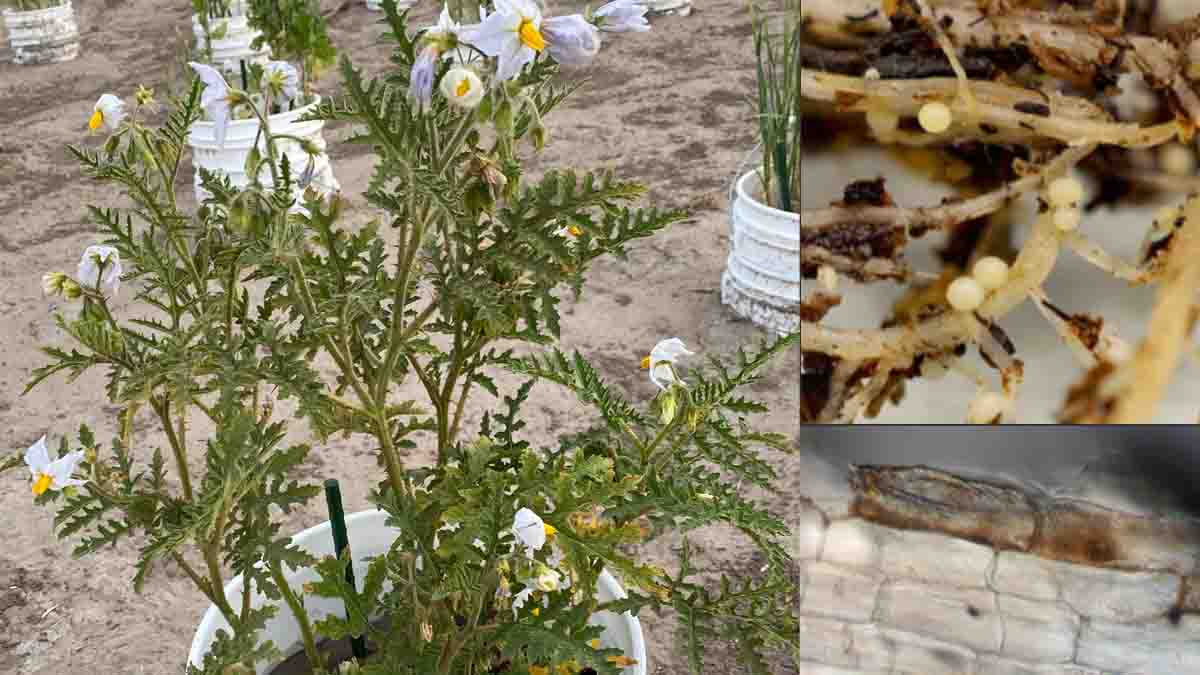
U of I Key in PCN Win
Nearly two decades after a quarantine pest of potatoes known as the pale cyst nematode (PCN) was first discovered in eastern Idaho, officials have confirmed their first success in eliminating it from a once-infested farm field.
Having passed the rigorous testing requirements of a federally funded PCN eradication program, a 118-acre field belonging to Shelley farmer and Idaho Farm Bureau Federation President Bryan Searle has been deregulated and is once again eligible for potato production.
Searle attributes the positive outcome in part to the efforts of University of Idaho agricultural researchers, led by Louise-Marie Dandurand, a professor in the Department of Entomology, Plant Pathology and Nematology and director of U of I’s PCN Project.
“Researchers at University of Idaho played a big role in helping us arrive at this monumental moment. We worked hand in hand with them on this issue, and they played a pivotal role in helping find a solution,” Searle said. “They are the experts and the ones who have done the research necessary to say we need to try this and this. Their role in all of this is greatly appreciated.”
PCN are microscopic, cyst-forming roundworms that can damage certain crops. Females form cysts that can hold 350-400 eggs, which can be dormant for more than three decades while remaining viable.
U of I nematologist Saad Hafez, who retired as a professor in October 2024, discovered PCN in 2006 while testing the loose dirt in a truck hauling potatoes from a field in the Shelley area to a packing shed. After thorough testing of associated fields in the area, the U.S. Department of Agriculture’s Animal and Plant Health Inspection Service contained PCN to an 8.5-mile radius in eastern Idaho. It remains the sole location in the U.S. where the pest has been confirmed, though officials in New York have been battling a close cousin of PCN, the golden nematode, since 1941. In a 2016 study, “Economic Impact of Globodera Pallida on the Idaho Economy,” U of I researchers, Chris McIntosh, Phil Watson, Samjhana Koirala and Dandurand estimated the annual economic impact of PCN on the Idaho economy, including indirect and induced effects, at $30.38 million.
In addition to concerns about potential production losses, containing and eradicating PCN is crucial for protecting trade markets for Idaho’s famous potatoes.
Currently, 6,315 acres are regulated under the PCN program — including 3,420 acres that are considered infested and 2,895 acres that are regulated due to associations with infested fields.
To be deregulated, an infested field must pass through three steps. The first step entails confirming that no eggs in any cysts sampled from the field contain viable eggs. Unlike living eggs, dead eggs will absorb a stain and be readily observable under a microscope.
Dandurand’s laboratory conducts the second test, which entails raising potted susceptible potato plants with soil harboring cysts supplied by APHIS. The greenhouse test takes 16 weeks to complete and is repeated three times over a year and a half to confirm that no cysts are stimulated to reproduce.
The third test is conducted in the field, where the farmer must raise three seasons of crops planted to a susceptible potato variety, followed by testing to confirm no cysts with viable eggs have surfaced.
“Our regulatory program is extremely stringent and it’s very hard to get through. That grower has been out of production for 19 years and can finally get back into production,” Dandurand said of Searle’s accomplishment. “For that grower it’s an incredible achievement to regain access to that land.”
At Dandurand’s urging, Searle applied a mustard seed oil product that U of I tested, which proved to be highly effective against PCN. Dandurand and Searle also spoke regularly about potential crop rotation options in the field.
U of I has also conducted research targeting potato cyst and root-knot nematodes (RKN), funded with the $6.8 million Potatoes and Pests (PAPAS) grant (www.potatonematodes.org) from USDA’s National Institute of Food and Agriculture. The four-year PAPAS project is in its third year and may ultimately be extended for a fifth year. PAPAS is developing better molecular diagnostic methods for different pathotypes and races of nematodes, as well as decision-support models to help both regulators and growers determine the best strategies for reducing nematode populations in individual fields. The models include data and records from New York’s long-term golden nematode project.
Developing nematode-resistant potato cultivars is another key strategy of the PAPAS team. The resistance work began in 2015, but it can take up to 20 years before the first resistant varieties are released.
“Resistance is really one of the most effective tools at reducing and keeping down nematode populations,” Dandurand said.
Finally, the PAPAS team is studying plant defense genes in litchi tomato, which is immune to PCN and RKN and introducing them into potato cultivars using biotechnology. Through the research, they hope to identify pathways in potatoes that may be activated to confer similar defenses. This plant also produces toxic compounds that kill the nematodes. They’ve identified some of those toxic compounds with the goal of developing new nematocidal chemistries.
Dandurand emphasized that researchers from USDA, Oregon State University and Washington State University, and Cornell University have also been key contributors in the PCN eradication effort.
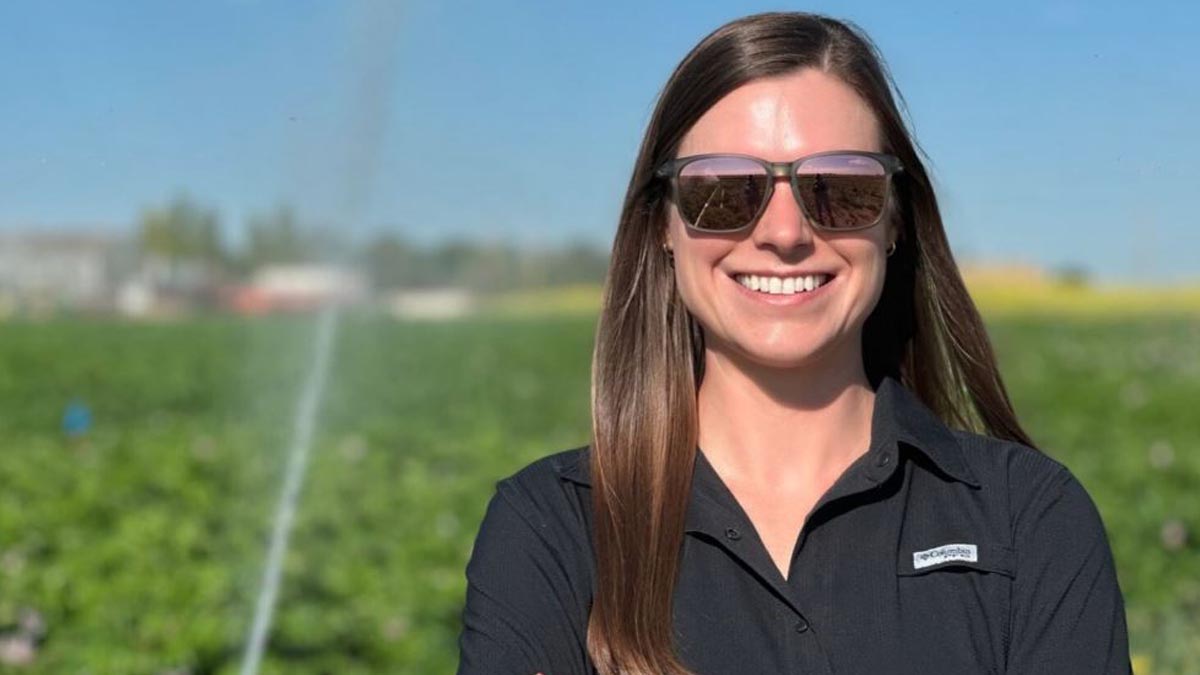
New Irrigation Specialist
Emily Bedwell developed tools as a University of Georgia graduate student that are helping farmers in the south to conserve water and reduce production costs.
As University of Idaho Extension’s new irrigation specialist, based at the Kimberly Research and Extension Center, Bedwell is now devoting herself toward improving Idaho irrigators’ bottom lines.
“Irrigation here is necessary — these crops don’t grow without it — whereas in Georgia it’s supplemental,” Bedwell said. “This position has such potential for an incredible impact, and I look forward to connecting with growers and seeing what their needs are, making sure a system is compatible with field-specific conditions and really finding answers to their specific questions.”
Bedwell loves numbers and solving problems and once planned on becoming an accountant, earning a bachelor’s and master’s degree in accountancy from Mississippi State University.
“I had an internship doing taxes for an accounting firm and I realized, ‘This is not it,’” Bedwell recalled.
She credits a favorite accounting professor, Brad Trinkle, with helping her change the course of her career. The professor asked her what she would choose to read while waiting in a dentist’s office with a good selection of magazines. Bedwell replied that she would reach for a National Geographic every time.
Based on her response, Trinkle urged her to consider a degree in environmental resources.
She went on to earn a master’s in wildlife, fisheries and aquaculture with an emphasis in precision agriculture from Mississippi State University, and then a doctorate in crop in soil sciences with an emphasis in precision agriculture from the University of Georgia's Tifton campus.
For her master’s thesis, Bedwell helped develop a decision support tool factoring historical yield patterns to help farmers compare the economics of keeping marginal ground in production versus enrolling it in a land conservation program. Subsequent graduate students continued working on the tool, which is now undergoing final revisions prior to publication.
She later worked under Professor George Vellidis, who is known for creating variable-rate irrigation, for her dissertation. Vellidis tasked her with developing a tool that provides irrigation scheduling recommendations based on real-time weather patterns, current crop growth stage and soil conditions. Her app performed well in testing in the spring and has been widely downloaded and used. A blog post Bedwell wrote explaining how to use the app for University of Georgia Extension had more than 650 views during June alone.
To Bedwell, who was seeking positions in the Pacific Northwest, the U of I irrigation specialist position represented a dream job. She learned about the job opportunity through the department head of her school at University of Georgia, former U of I Department of Soil and Water Systems Professor Jodi Johnson-Maynard.
“When I started looking at what research land grant universities were doing, U of I stood out,” Bedwell said. “It seemed like there was a good collaborative network among the departments and a strong Extension system. I love irrigation, but I’m passionate about Extension.”
Bedwell has identified a couple of important projects to prioritize early in her tenure at U of I. First, she’d like to evaluate irrigation systems on the market, calculating their efficiencies while factoring in potential wind speeds, drift and other region-specific conditions. She also plans to update crop coefficient curves, which depict the exponential increase in water demand by crops as they grow and can guide irrigators in the efficient use of water. U of I hasn’t updated the curves since the 1970s. Bedwell anticipates using the updated curves as a foundation for creating new decision-support tools, like the irrigation scheduling app she launched in Georgia.
Bedwell also plans to quantify nutrient loads entering crops systems through the application of dairy wastewater and partner with UI Extension forage agronomist Pramod Acharya on analyzing soil-water irrigation deficits for alfalfa.
In her personal life, Bedwell loves recreating in the outdoors, including biking, hiking, swimming, cycling and kayaking. She and her husband, Cameron, both compete in triathlons. Cameron is a musician who works as an education representative for the musical instrument supplier Dunkley Music.
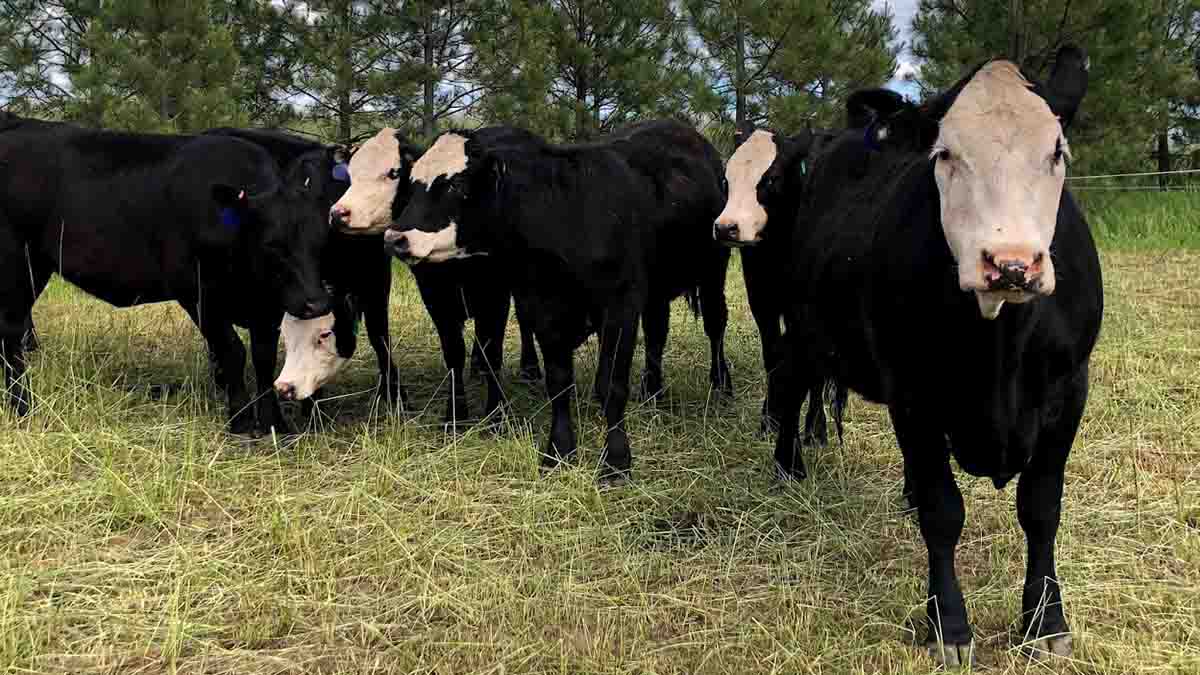
Ranching for Profit
University of Idaho Extension is organizing a Ranching for Profit workshop that will prepare western ranchers to sell directly into local and regional markets and boost their profitability.
Ranching for Profit is a Wheatland, Wyoming, corporation that offers business-management education to ranchers. Ranching for Profit instructor Andrew Morris will facilitate the course, scheduled for Aug. 20-21 at U of I’s Sandpoint Organic Agriculture Center (SOAC), 10881 N. Boyer Road, Sandpoint, with sessions running from 9 a.m. to 4 p.m.
The cost of participation is $40 per person, which includes lunch on the first day and beverages on both days. Partial scholarships are available. The deadline for submitting applications is Aug. 13. The Northwest and Rocky Mountain Regional Food Business Center, through its Animal Protein Supply Chain Theme Team, gave Extension $10,000 toward planning and hosting an educational program for ranchers.
“We had been hearing that farmers wanted to have a Ranching for Profit workshop in Idaho,” said Colette DePhelps, a U of I area Extension educator specializing in community food systems, who is co-lead of the center’s Idaho team. “These workshops are widely popular. They are very much led by people who have expertise in the field of ranch management, and they are very hands-on and applied.”
The workshop will cover ranching profitability, restructuring a ranch for profitability, evaluating success, financial principles, understanding the balance sheet, key financial ratios and employee structure. Ranchers Eileen Napier and Stan Hayes will also offer firsthand experiences with Ramstead Ranch in Ione, Washington.
Most Ranching for Profit workshops span a week and focus on cow-calf operations that sell into larger markets. Morris will redesign the Sandpoint workshop to target sales directly to consumers and end users within local and regional food systems, such as restaurants and retailers. The workshop will also cover sales of value-added products.
Organizers with Extension anticipate drawing ranchers from north Idaho, eastern Washington, northeast Oregon and western Montana. Area ranchers who have participated in past workshops offer rave reviews.
“Ranching for Profit was the best training I’ve ever had on any topic in my entire life,” said Mike Guebert, a Corbett, Oregon, rancher who participated in a previous workshop. “It has fundamentally changed the way I think about my business and my only regret is that I didn’t do it 15 years earlier.”
Participants may book lodging at the SOAC bunkhouse for $25 for the first night and $5 for additional nights. For information about lodging, contact Kate Wood, Extension program manager for community food systems in Sandpoint. Contact DePhelps with questions about partial scholarships.
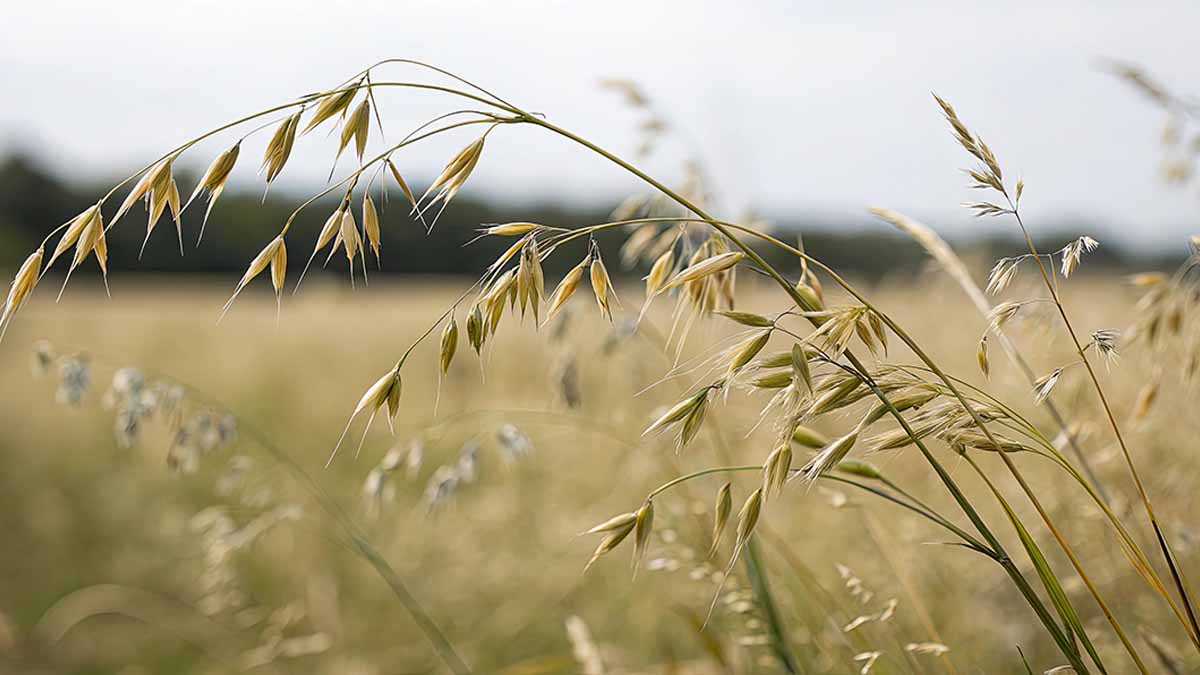
Harvest Weed Challenges
Amid winter grain harvest, southern and eastern Idaho farmers are reporting strong yields but also big problems with herbicide-resistant weeds, according to experts with University of Idaho Extension.
Growers have had an especially tough time controlling resistant wild oats. Wild oats compete with crops for limited resources and can reduce wheat yields by more than 24% and barley yields by 18% at a density of 10 plants per square foot, according to a weed management Extension publication authored by a team of U of I, Oregon State University and Washington State University weed scientists.
Weed challenges aside, most winter wheat and barley yields in the region should be outstanding.
Juliet Marshall, UI Extension cereals pathologist and associate director of the Idaho Agricultural Experiment Station, has confirmed Magic Valley feed barley yields exceeding 220 bushels per acre, and she’s optimistic those numbers aren’t outliers.
The region’s growers began harvesting winter grains in mid-July. Marshall believes a long fall following winter grain planting, the combination of warm days and cool nights throughout the current season and favorable growing conditions — aside from weed pressure and limited foot-rot challenges — have combined to boost yields.
“We’ve had some really good, consistently cool nights,” Marshall said. “Even though temperatures have been hot overall, consistently cool nights is good for grain fill.”
Marshall anticipates spring grain crops will be average yielding, as growth of many spring-planted fields has been set back by late-season frosts. A short water supply could also curb spring grain yields, as some growers are opting to shift water allocated for small grains to potatoes and other higher-value crops.
Marshall also advises growers to be careful in their weed management to avoid even greater problems next season. She’s received reports of wild oats gaining a foothold in fields from Idaho Falls north to Ashton and throughout southeast Idaho.
Albert Adjesiwor, a UI Extension weed scientist, has also been inundated with calls from growers unable to control wild oats.
“I’ve gotten so many wild oats calls this year, more than I’ve ever gotten in my entire time here, because they just can’t kill it,” Adjesiwor said. “There are some fields where it’s a thick stand of wild oats, and at those high densities you’d expect to see 20-30% yield losses.”
Pinoxaden, which is the active ingredient in Axial herbicide, has been a primary tool for controlling wild oats in the region. Adjesiwor noticed some pinoxaden resistance in wild oats when he first arrived at the university in 2021, and resistance has progressively grown stronger. He recently screened wild oats sampled from 75 farm fields throughout the region to assess herbicide resistance, confirming the greatest pinoxaden problems in southeast Idaho east of American Falls.
“Farmers are throwing different things at it, and it doesn’t seem to be working. Not only are you getting a yield loss, but then you spend a lot of money on herbicides that don’t provide adequate control,” Adjesiwor said.
If possible, Adjesiwor recommends that farmers with high densities of wild oats this season rotate next season to broadleaf crops such as potatoes or sugarbeets, expanding their herbicide options.
Another approach would be to plant CoAXium wheat, which is bred to resist applications of quizalofop herbicide. However, the weed has also shown resistance to quizalofop, though the resistance is not as pronounced as with pinoxaden. Growers in tilled systems can also apply triallate (Far-GO/Avadex) as this herbicide still appears effective on most wild oats collected from southern Idaho, Adjesiwor said. Triallate must be mechanically incorporated into soil to provide effective wild oat control.
Growers may also wish to plant Clearfield wheat, which is bred to resist applications of imazamox-based herbicides, such as Beyond. The downside of using Clearfield is plant-back restrictions against following wheat crops with potatoes, sugarbeets or barley, which may be harmed by imazamox.
Marshall plans to include the pros and cons of using Clearfield wheat varieties to control wild oats as a topic of the UI Extension cereal school scheduled for Feb. 4 in Fort Hall.
Faces and Places
Associate Professor Phil Bass, a team of meat sciences graduate students and James Nasados, meat lab manager, hosted a workshop July 15-16 for 16 employees with the Beef Northwest cattle feeding company. Participants including pen riders, data analysts, cattle health managers, human resources personnel and a U of I intern came to Vandal Brand Meats to spend a day and a half learning about beef. The workshop included an assessment of the live steers they brought to the meat lab, a slaughter demonstration from stun to chill, classroom time discussing meat science, beef grading and carcass fabrication.
Kamille Mirkin, of Jerome, who is studying agricultural economics, was chosen as a 2025 Royal Scholar by American Royal and Merck Animal Health. American Royal is a livestock show, horse show, rodeo and barbecue competition hosted each September in the Kansas City metropolitan area. Each scholar will receive a $3,000 scholarship and will serve as an ambassador for the American Royal throughout the year. They’ll also participate in business and industry visits throughout the Kansas City area. (Mirkin)
CALS Director of Government and External Relations Rachael Bickerton and CALS Dean Leslie Edgar attended the Farm Bureau Summer Leadership Meeting in McCall and stopped by the U of I McCall Field Campus for a tour with Director Karla Eitel.
The National Science Foundation has awarded a $600,000 grant to University of Idaho for a project entitled “Collaborative Open Framework for Accessible Interoperable Research,” under the direction of Michael Strickland and Zachary Kayler, faculty in the Department of Soil and Water Systems, under award No. 2531886. The grant entails gathering and storing data at the university’s new Deep Soil Ecotron, which will facilitate soil research at the greatest depths of any facility in the world under a controlled environment. Luke Sheneman, director of the IBEST Northwest Knowledge Network, is also leading the project.
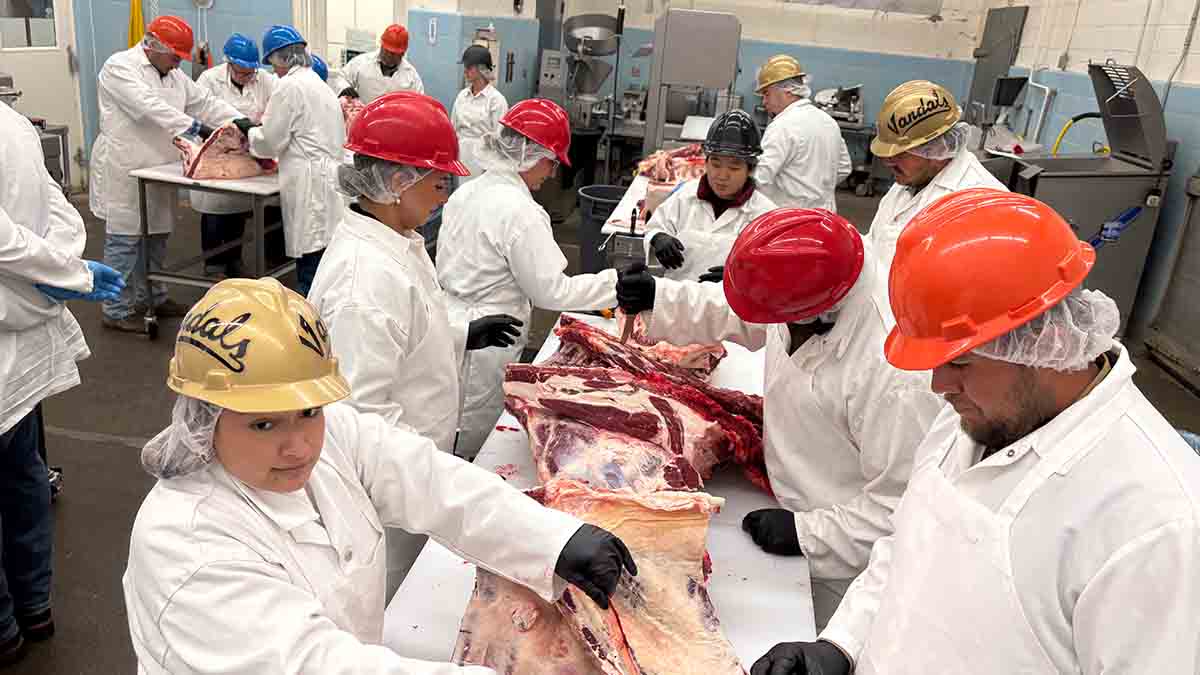

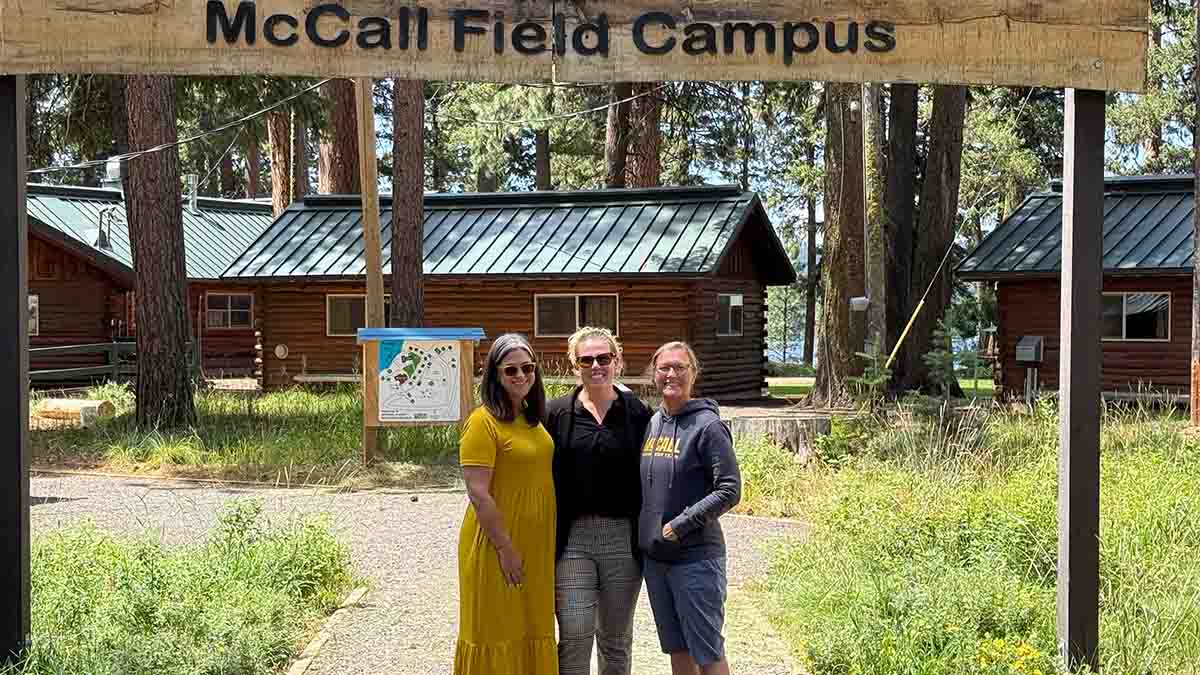

CALS in the News
- July 23 | Potato Grower | U of I researchers integral in deregulation of first field from PCN program
- July 22 | Lewiston Tribune | Heat wave leaves swimming pools packed, stores running out of air cond...
- July 21 | Idaho Ag Today | Ag information network of the west
- July 21 | Intermountain Farm and Ranch | U of I meat science team training retail meat cutters
- July 18 | Spudman | Getting ahead of storage issues
- July 14 | Idaho Farm Bureau | First-ever Idaho spud field released from PCN program
- July 11 | Intermountain Farm and Ranch | Battling cottony maple scale
- July 11 | Capital Press | U of I-grown potato crop destined for food bank
- July 11 | PNW Ag Network | Parrella confident U of I's CALS progress will continue
- July 10 | Ag Proud | Idaho CAFE completes first phase, welcomes officials for tour
Events
- July 31 — Poverty in Idaho, Considerations for Community Partners, Online
- July 31 — Forests and Flames: Learn, Protect, Prepare, Island Park
- July 31 — Utilizing Digital Marketing for Veteran Farm Businesses, Online
- Aug. 4-Sept. 3 — Certified Remote Work Professional Course, Online
- Aug. 14 — Field Day at Parma, Parma
- Aug. 20-21 — Ranching for Profit Workshop, Sandpoint Organic Agriculture Center
- Aug. 21 — Aberdeen Potato Integrated Pest Management Field Day, Aberdeen
- Aug. 21 — Fermentation Basics, Online







